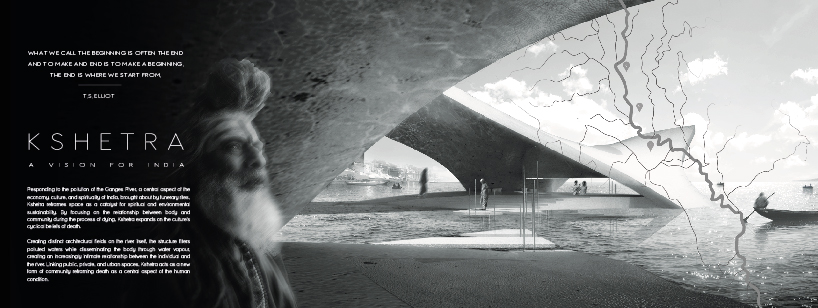
Kshetra | a vision for India by Evan from canada
designer's own words:
Kshetra: a holy field of active power
Responding to the increased toxicity of the Ganges River, a central aspect of the economy and culture of India, brought about in part by funerary rites, Kshetra re-imagines both the use of space as well as its role in the bereavement and remembrance of individual identities. Composed of three distinct floating architectural fields situated along the river, Rakha, Yatra, and Bhavana, the structures integrate a central funerary area with space for religious rites and public programs. Rakha, located in Allahabad, is composed of three water pores, two designated to religious rites with a central pore designated to disseminate loved ones in a more holistic manner. Yatra, Constructed as two segments, the soul and body model, migrates along the expansive Ganges river to serve previously unreached communities. Providing space the celebration of individual life, the Yatra model serves remote communities that are unable to venture to pilgrimage site such as Varanasi or Allahabad. Bhavana, located in the holy city of Varanasi, offers space for traditional cremation, meditation, gathering, and river burials. This model seeks to reframe and revitalize one of the most polluted areas along the river.
The central funerary pore, Padma, investigates the relationship between traditional practice and contemporary sustainability. The Hindu rite of cremation involves the use of a funerary pyre situated along the shore or at designated burning ghats to cremate the remains of the deceased. These pyres result in the use of approximately 50 millions trees each year releasing vast amounts of carbon dioxide into the atmosphere. Furthermore, Hindu doctrines note the spiritual power of the Ganges river as a gateway to surpass the cyclical nature of reincarnation. As a result, approximately 250 million tons of ashes are deposited in the Ganges each year contributing to the overall toxicity of the river which empties into major ecosystems throughout India.
The Padma space re-envisions the pyre as a series of stone fins immersed in a pool of water connected to an underwater filtration system. This system employs aerobic bacteria to filter polluted river waters and direct the purified solution into the structure for use in religious activities or in the re-imagined funerary pyre. As the individual is cremated, the stones store the latent heat and begin to vaporize the water in the pore. This vaporization causes the particles of water to attach to the ash developing an intimate relationship with one’s body and the river as the remains are carried out through the vault in the arching canopy. The ashes, along with the purified waters, enter the water cycle and are disseminated across a greater land area enabling both macro and micro ecosystems to process the carbon produced from the cremation.
Through the use of three distinct sites, the structure addresses the multifaceted nature of death in a contemporary context contrasted with the prominence of the areas traditional observances. Centered on the notion of purification – through the fires of the pyre, the phenomenological experience of the cool stone and open air, and the filtration infrastructure – Kshetra explores the capacity of architecture to not only offer meaningful space for the remembrance of individual life but to connect users with a greater community that allows one to accept the most human quality of all; our mortality.
Kshetra | a vision for India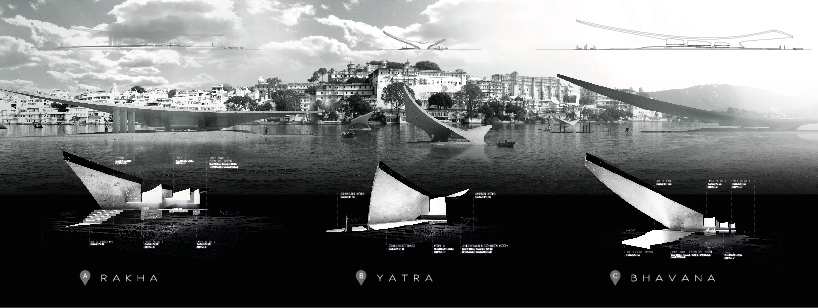
Kshetra Models | Floating Architectural Fields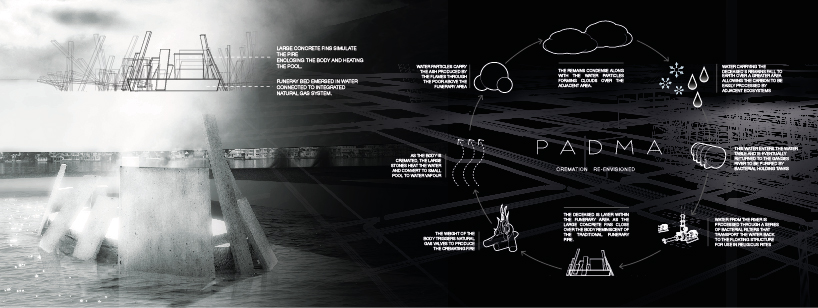
Padma | Cremation Re-Envisioned
Rakha | ash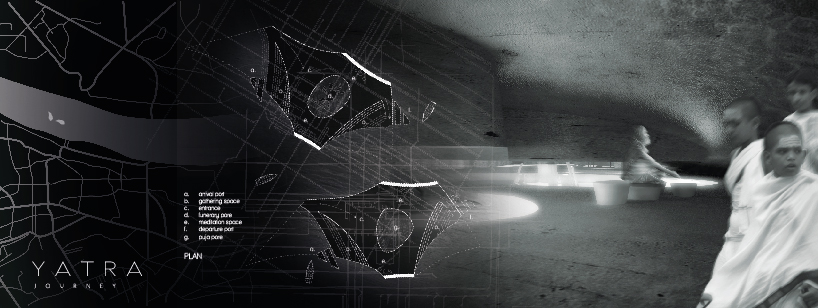
Yatra | journey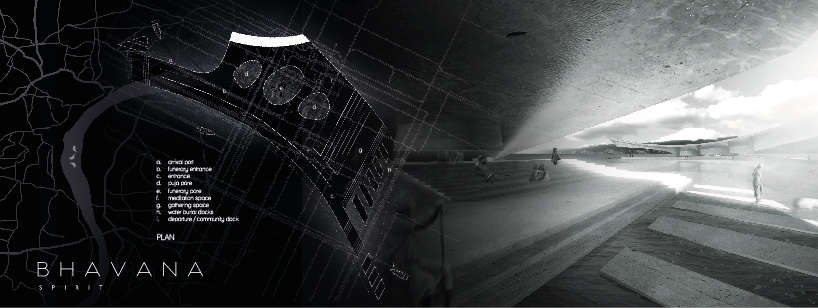
Bhavana | spriit